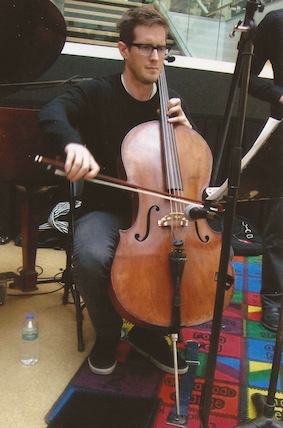 A well-played cello is one of Earl’s favorite sounds. As a kid he despised the instrument, as there was a poor, amateur cellist who played the occasional offertory at his church. He remembers being in pure agony as she scraped her bow across the strings to render the simplest of hymnal melodies. In the proper hands, the cello is capable of so much — expressive singing, poignant pizzicato annunciations, a wide range of lows and highs, large dynamic contrasts, double stops, the ability to function convincingly like a jazz bassist if needed, blending well with other instruments, etc.. Plus, there is such a vast history of notated and recorded literature from which to learn. The cello has all of these wonderful attributes, while fitting Earl’s initial agenda of not using instruments directly associated with jazz, to expand his color palate and stretch his imagination, both compositionally and pianistically.
A well-played cello is one of Earl’s favorite sounds. As a kid he despised the instrument, as there was a poor, amateur cellist who played the occasional offertory at his church. He remembers being in pure agony as she scraped her bow across the strings to render the simplest of hymnal melodies. In the proper hands, the cello is capable of so much — expressive singing, poignant pizzicato annunciations, a wide range of lows and highs, large dynamic contrasts, double stops, the ability to function convincingly like a jazz bassist if needed, blending well with other instruments, etc.. Plus, there is such a vast history of notated and recorded literature from which to learn. The cello has all of these wonderful attributes, while fitting Earl’s initial agenda of not using instruments directly associated with jazz, to expand his color palate and stretch his imagination, both compositionally and pianistically.
When deciding upon an instrumentation for C.O.W., Earl initially only wanted to use instruments not immediately associated with jazz. Clarinet and cello were his first choices. There was tremendous appeal in the clarinet’s extensive range and therefore the compositional flexibility it affords. Clarinetist Darryl Harper was an obvious choice for the chair as they were old friends, he lived in nearby Amherst, MA, and he is a great player. This combination performed together several times, but three things lead Earl to eventually replace clarinet with alto sax: 1) he added percussion, which made it harder to hear the clarinet, 2) he started imagining and writing edgier music, 3) Darryl moved to Richmond, VA to teach on the faculty of Virginia Commonwealth University.
